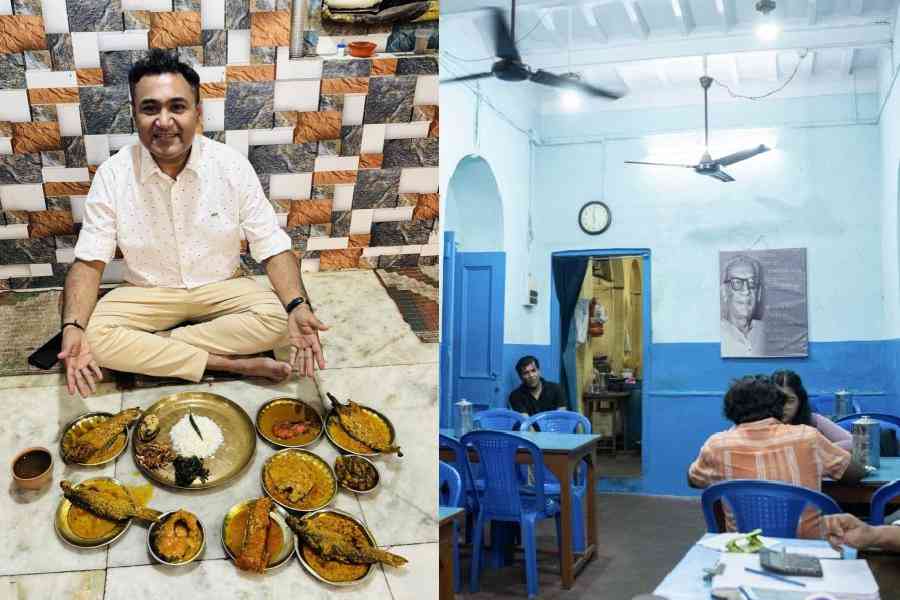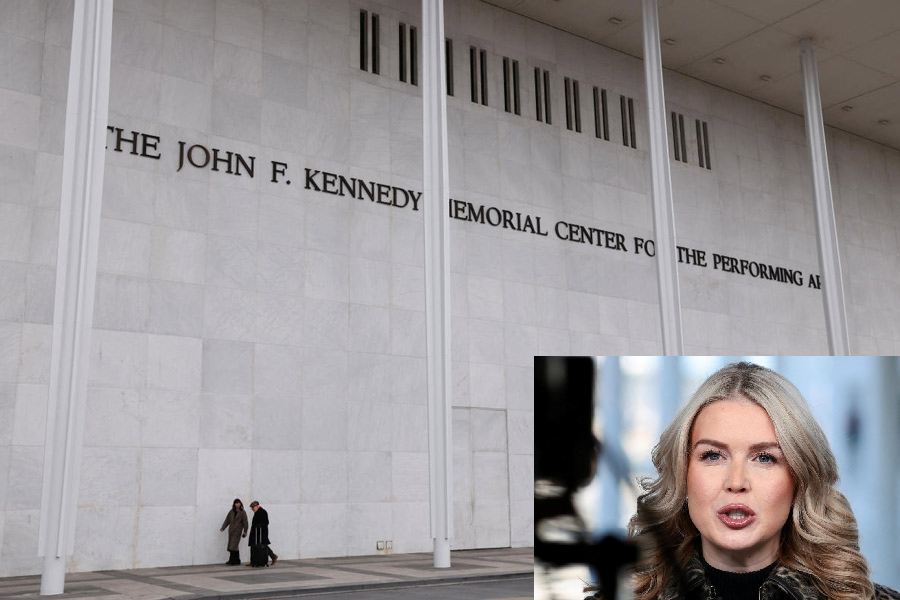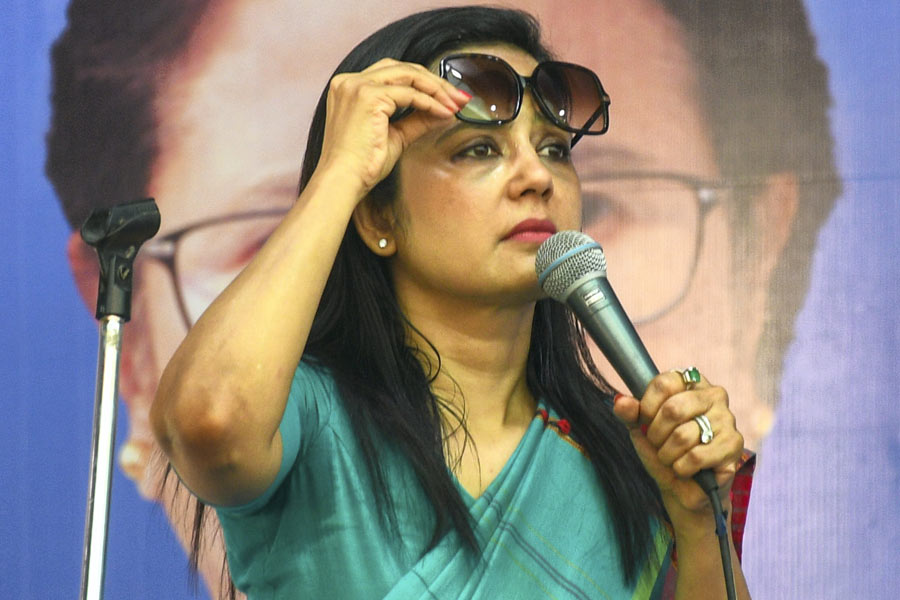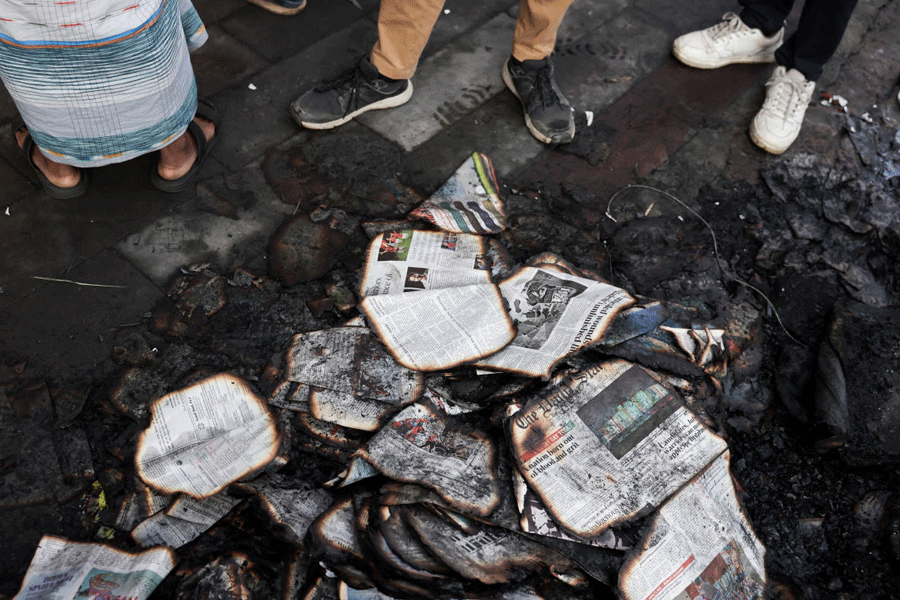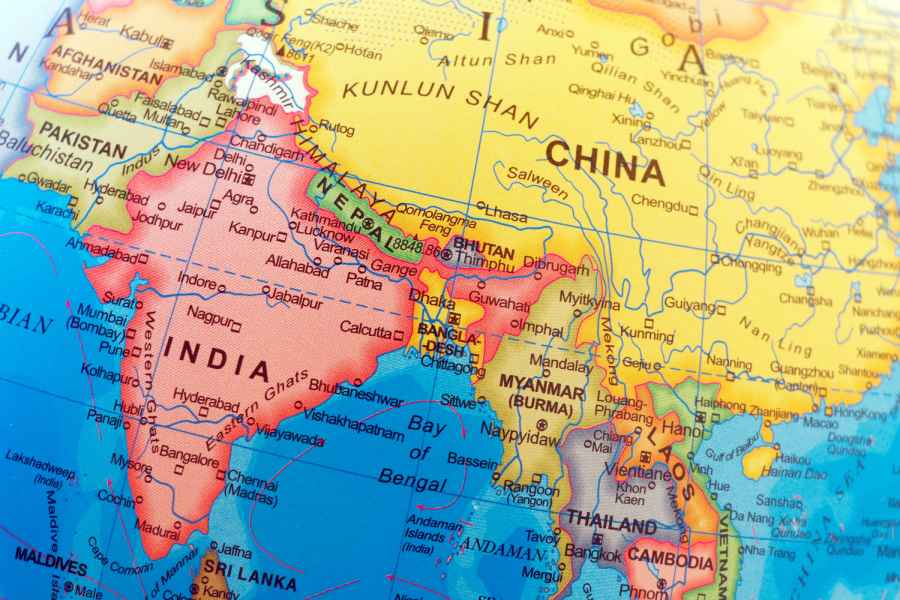Growing up in Calcutta, my afternoons in the Chaudhury household were steeped in the aroma of steaming rice (shaada bhaat), the sharp tang of mustard in a fish curry (sorshe maachh), and the warm, earthy comfort of muri ghonto. My mother’s kitchen taught me to love Bengali food, but the city’s labyrinthine lanes — where generations have whispered recipes into pots and pans — taught me to crave its stories. And the establishments that would whisper those stories to me are what in Bengal are known as ‘pice hotels’.
These aren’t just eateries; they’re living archives, guarding flavours that predate cookbooks, preserved by families who’ve clung fiercely to tradition. For me, it is more than about legacy. Rather, it is about walking back to the memory of recipes and dishes that were being perfected in tiny kitchens around Bengal. As I recount the long-forgotten tales that were previously being cooked in Bengali kitchens, let’s take a trip down those lanes together and revisit some old pice hotels tucked away in them.
Jagatmata Bhojanalaya: Where Time Stands Still
Where: 40, Kailash Bose Street, SREEMANI MARKET area
One hundred and fifty years, no less, and Bikalichandra Das’s legacy survives in Gangadhar Mishra’s hands. A very interesting eatery tucked in between buildings. You walk in through a narrow lane. The building is a character itself. You find an Odia cook clad in typical Bangla gamchha, serving steaming hot rice from the brass hnari (cauldron). Their Aalu Makha (mashed potatoes with mustard oil and green chilli) is the taste of homecoming, a comfort food for any Bengali soul. The Chingri Malaikari here rivals any high-end Bengali restaurant, but it is the Saag Bhaja, with its understated elegance, that leaves a lasting impression. Their Bhetki preparations are fresh, simple, and absolutely satisfying. To feel the real flavours of these dishes, Jagatmata has a separate seating arrangement where patrons can choose to eat sitting on the floor as was the traditional Bengali practice.
Mahal Restaurant: The Presidency Boarding House Turned Culinary Landmark
Where: 6/3, Ramanath Majumdar Street, COLLEGE STREET area
In 1917, Nandalal Dutta opened a boarding house for Presidency College students. Today, his grandson Sandeep presides over a culinary heirloom with an old Calcutta rustic feel. Step inside and your eyes drift to the chalkboard menu — a daily ritual that I am still in awe of. And nostalgia seeps in with the old giant fans hanging from the high ceiling.
Here, I found one of the best maachh-er dim-er bora, crisp and golden on the outside, but bursting with the rich, grainy texture of fish roe within. A comforting bowl of shukto, with its bitter-sweet assembly of vegetables, reminded me of my grandmother’s cooking. But for fish lovers like me, the real showstoppers were Pabda, Chitoler Peti, Maachher Mathar Chochchori, Aar Maachh — all cooked in different gravies with a sprinkle of spices that found prominence in every Bengali household during those times.
Swadhin Bharat Hindu Hotel: The Temple of Fish Delicacies
Where: 8/2, Bhawani Dutta Lane, COLLEGE STREET area
If you want to understand the depth of Bengal’s love affair with fish, a visit to Swadhin Bharat Hindu Hotel is a must. Since 1912, three generations of Pandas have turned fish into an art. Sixteen varieties crowd the menu. Their Puishaag Chochchori, a delightful medley of greens and lentils, was the perfect way to start the meal before diving into the more robust flavours. The Tangra Maachh er Jhaal sets your tongue ablaze, its mustard oil smoke clinging to your palate like a memory, along with the Boal Maachh er Jhaal, rich and pungent, that lingered on long after I had finished. And the Mourola Maachher Chochchori.
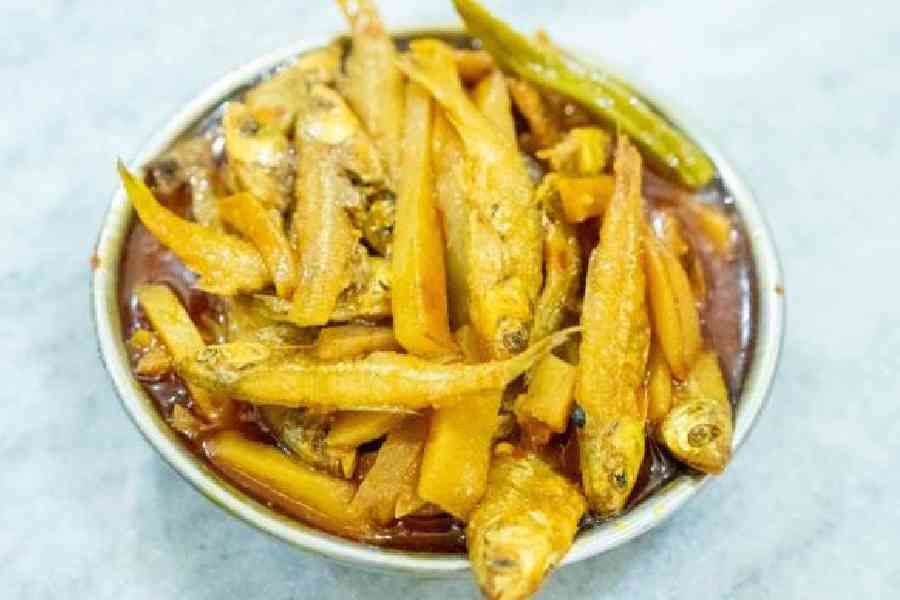
The Mourola Maacher Chochchori at Swadhin Bharat Hindu Hotel is quite the unique dish
Tiny, crispy fish and gone too soon. I’d trade a summer afternoon for another plate.
Jagannath Hotel: A Lesson in Subtlety and Complexity
Where:114, College Street, College STREET MARKET
Eighty years ago, Govardhan Talui began a quiet revolution by opening a store amidst old Calcutta buildings with high chances of being overlooked. But his gamble paid off. His Kaatla Maach er Korma simmers so long that the richness of the curry seeps into every fibre of the fish. The Chitol er Peti, a delicacy made from the prized Chitol fish belly, is as indulgent as it is nostalgic. But my absolute favourite is the Chingri Malaikari — succulent prawns in a coconut-mustard gravy, a dish that embodies the very essence of Bengali luxury. The Muri Ghonto, a dish made with fish head and rice, takes me straight back to childhood, when my mother would prepare it with the same patience and love. Even today, you find workers walking in for their regular meal here.
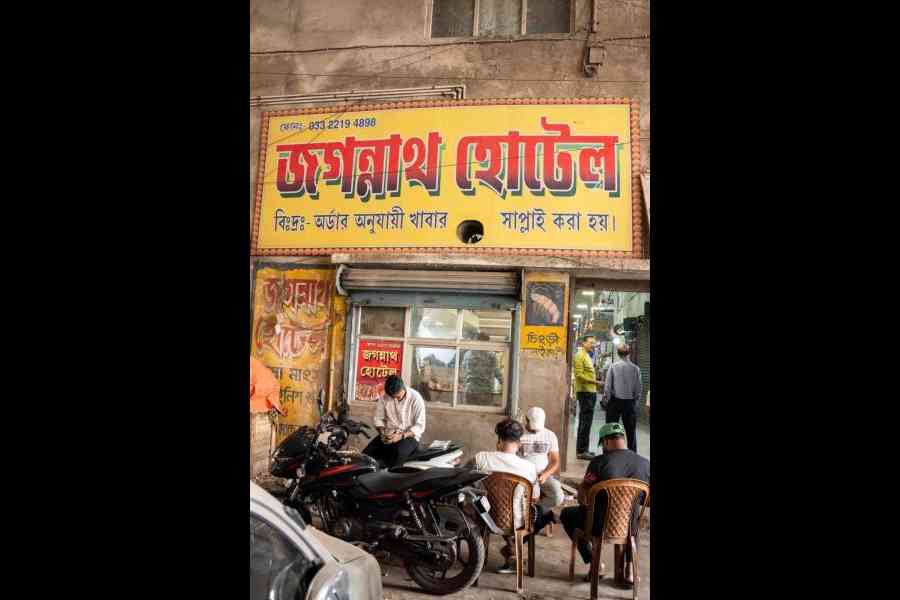
Jagannath Hotel is tucked away in a corner, but isn't inconspicuous by any means
Hotel Sidheshwari Ashram: The Bright Orange Icons of Bengali Hospitality
Where: 19, Rani Rashmoni Road, NEW MARKET area
Since 1925, Rita Sen’s servers — clad in old canteen-style blazing orange T-shirts and half-pants — have carried trays of divinity. The Shorshe Pabda’s mustard gravy could make even the cold-hearted weep, with joy. Their Posto’r Bora (poppy seed fritters) melts in my mouth with each bite. The Mochar Ghonto, another banana blossom dish, is a labour of love, something I would find my grandmother prepare in my maternal home during my summer holidays for hours, peeling layer by layer, while the Enchor Chingri, jackfruit cooked with prawns, is like tasting heaven on my plate. The most interesting and intriguing dish of all is their Maachher Mathar Jhol (fish head curry). Fish head curry is known for its rich, spicy gravy and tender fish meat that has absorbed all the aromatic spices. Don’t miss a chance to try their mishti doi!
Parbati Hotel: The Grand Tradition of Bengal’s Oldest Eateries
Where: 66, Ashutosh Mukherjee Road, BHOWANIPORE area
Parbati Hotel, established 113 years ago by Joydeb Kundu and now run by his descendant Ruma Kundu, is a place that celebrates the richness of Bengali cuisine. Their Bhetki Bhapa, steamed fish in mustard paste, is a masterpiece. The Paturi, fish wrapped in banana leaves and cooked till tender, is the very definition of authenticity. The Katla Peti, the fatty belly portion of the katla fish, is indulgent and flavourful. Paired with Topse Fry and Basanti Pulao, fragrant and lightly sweet, it is a match made in culinary heaven. And, of course, their Mutton Kosha, slow-cooked with spices till it reaches a deep, dark hue, is the kind of dish that defines an entire meal.
Adarsha Hindu Hotel: Where Tradition Meets Simplicity
Where: 212, Rashbehari Avenue, gariahat market
If you have read Bibhutibhushan Bandopadhyay’s novel by the same name, you know what this place holds inside. Adarsha Hindu Hotel, now 70 years old, has a unique way of serving food — on sal pata with a kola pata on top. Run by the sons of founder Kalipada Maity, under the careful supervision of manager Nabashankar Das, this place takes me back to the simple joys of childhood. Their Fulkopi Chingri, a cauliflower and prawn dish, is homely and heartwarming. The shukto here has just the right balance of bitterness and sweetness. Their Boal Maachh and Chitol er Peti reaffirms why these fish varieties are cherished by Bengalis across generations. Even though it has changed into a premium decor, once you step in, the food remains the same from the time of Bibhutibhushan’s Bengal.
Hotel Tarun Niketan: The Hidden Gem of Bengali Heritage
Where: 88/1B, Rashbehari Avenue, RASHBEHARI CROSSING
Established in 1915 by Ishan Bed and now run by his fourth-generation descendant Amaranth Bed, Hotel Tarun Niketan has kept its recipes intact. Their Ilish Matha Diye Kochu Shaag, a dish of taro leaves cooked with hilsa fish head, is a lesson in complex flavours. The Enchor Chingri, young jackfruit cooked with prawns, and Kochur Loti Chingri are reminiscent of lazy summer afternoons at home. The Fulkopir Roast, roasted cauliflower cooked with an array of spices, is a delight. But what truly stole my heart was the Kumro Phool er Bora, pumpkin flower fritters, something I hadn’t tasted in years. Their Haash er Dim Kosha, duck egg curry, is rich and robust, and the Butter Fry, a Bengali version of a crumb-fried fish cutlet, is the perfect ending to this feast. Even to this day, they put up their menu on blackboards — a traditional old Bengali-style canteen practice.
The beauty of Bengal is that it has earned passionate cooks. And these cooks, beginning at the break of dawn, hardly knew that their trivial practice of merely serving food was actually culminating in becoming treasured gems in the culinary history of Bengal.

